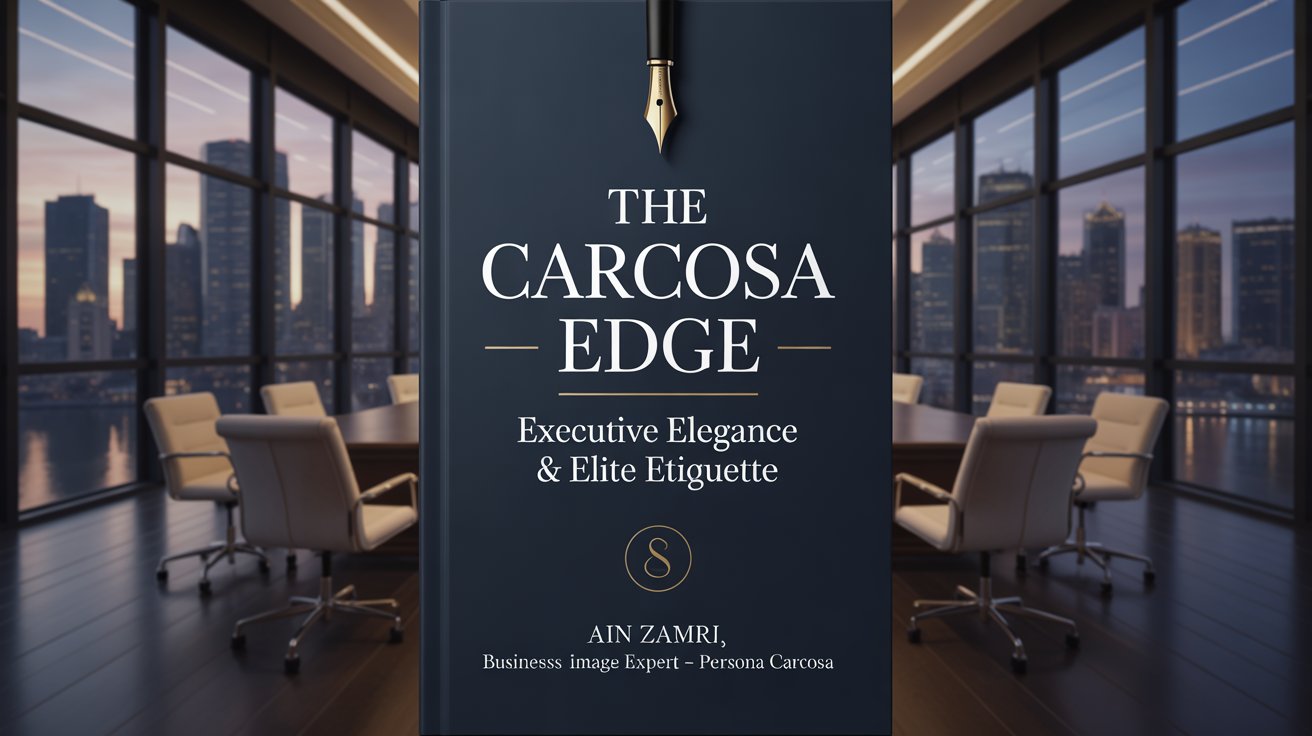
The Carcosa Edge: Executive Elegance & Elite Etiquette
About This Course

Curriculum Overview
This course includes 9 modules, 25 lessons, and 2:00 hours of materials.
Personal branding in the workplace is about presenting yourself in a manner that leaves a lasting, positive impression on colleagues, clients, and leaders.
Executive presence is projected through meticulous grooming. This includes keeping your hair neat and styled in a way that suits your work environment, choosing attire that aligns with the company dress code, and maintaining high standards of hygiene.
Being mindful of these pitfalls helps you maintain authority. Projecting authority goes beyond appearance; it includes posture, tone of voice, and confidence in interactions.
Dress codes are vital in shaping first impressions and ensuring you present yourself appropriately in various corporate settings. Formal attire typically involves suits, ties, and dress shoes for men, and tailored suits, blouses, dresses, or skirts for women.
A strategic corporate wardrobe is built on versatile, quality pieces that can be easily mixed and matched for different settings. The goal is to maximise impact while minimising excess.
The right accessories can elevate a corporate look and subtly communicate status, attention to detail, and personality. Avoid over-accessorising. Less is often more in business settings.
The way you greet and introduce yourself in professional settings sets the tone for every business relationship. A confident, courteous greeting demonstrates respect, openness, and readiness to engage.
In today’s workplace, digital communication is as important as face-to-face interaction. Good digital etiquette builds your reputation as a responsive, considerate professional and maintains positive relationships with clients, colleagues, and stakeholders across all communication channels.
Practicing etiquette during meetings and networking events demonstrates your professionalism and facilitates meaningful connections. Observing courtesies enhances your personal brand and strengthens your network.
Mastering verbal communication is essential for executives who must convey ideas clearly, inspire teams, and negotiate effectively. By actively refining verbal communication abilities, leaders can ensure their ideas are heard, respected, and acted upon.
Active listening is a hallmark of impactful leadership and social fluency. Active listening builds trust, reduces misunderstandings, and helps create an inclusive, productive environment.
Building rapport requires authenticity, empathy, and a genuine interest in others’ perspectives. By mastering these conversational skills, professionals can foster cooperation and guide outcomes positively in every interaction.
Boardroom etiquette is essential in demonstrating respect, professionalism, and authority within high-stakes meetings. Mastering boardroom etiquette ensures you’re seen as a reliable, diplomatic leader who contributes meaningfully to collective decisions and organisational progress.
Understanding and respecting the dynamics of hierarchy is crucial in professional settings, particularly in large organisations and formal meetings. Managing hierarchy skillfully will earn you respect from both peers and superiors.
Disagreement and negotiation are inevitable in professional environments, but handling them with assertiveness and respect sets you apart as a leader. Practicing this approach ensures robust discussions, innovation, and lasting influence in boardroom settings.
Today’s globalised environment brings together people from diverse cultural backgrounds, making cross-cultural understanding a vital professional asset. By embracing multiculturalism, professionals contribute to an inclusive workplace and demonstrate adaptability to international partners and clients.
Successful global business hinges on understanding what is acceptable or taboo in different countries. Observing key do’s and don’ts not only avoids embarrassing missteps, but also positions you as a culturally intelligent and globally competent professional.
Diplomacy is the art of navigating sensitive situations and fostering positive international relationships. Professionals who communicate diplomatically can bridge cultural divides, resolve conflicts amicably, and strengthen business relationships across borders.
Dining with colleagues, clients, or superiors is an opportunity to demonstrate refinement and professionalism outside the office. Demonstrating these behaviors projects executive composure and assures others of your social sophistication during business meals.
Whether you are the host or a guest, your demeanor at the table leaves a lasting impression.
Navigating common dining challenges with grace exhibits true executive presence. Displaying adaptability and poise in these situations enhances your reputation for cultural and social intelligence.
Body language is a powerful tool that communicates confidence, openness, and credibility without a single spoken word. In the workplace, consistent use of professional body language reinforces your message, enhances leadership presence, and ensures that your unspoken cues support your verbal communication.
Interpreting the non-verbal signals of others is key to effective communication and relationship building. Mastering this skill can prevent misunderstandings and help you respond appropriately in even the most nuanced professional situations.
Establishing a powerful presence is just as important in virtual meetings as it is face-to-face. By being intentional about your presence in any setting, you convey authority, foster engagement, and reinforce your professional brand at every opportunity.

Course Specifications
Send Course as Gift






Reply to Comment